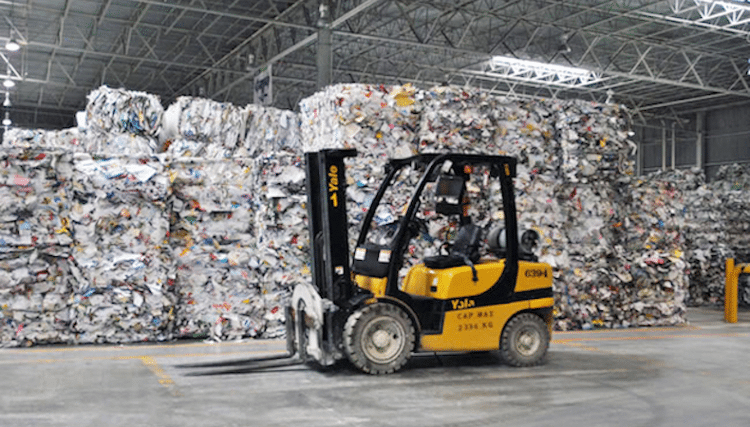Recycling paper getting complicated

In this week's Verdigris blog Laurel Brunner reflects on how the growing number of digital printing technologies calls for a new approach to recyclability.
One of the biggest problems for makers of paper based on recycled printed matter is quality, meaning cleanliness. Ensuring that the waste paper entering the recycling stream is sufficiently uncontaminated for use as a raw material for new products is hard.
Generally pulp and paper mills rely on a test procedure to check that the inks and coatings on a batch of printed matter can be removed, prior to processing. This is one of the basics of quality assurance in this sector.
That works fine for standard inks, but ink recipes, coatings and curing processes keep on changing. Innovations such as UV curing and the preference for more exotic coatings for prints, mean that new approaches to testing and preparing printed matter for recycling are needed. Paper mills have introduced new processes for prints that may be difficult to clean.
But this can make batch processing harder. It requires sorting of the materials to turn them into new graphic papers or downcycle them for cardboard, eggboxes and the like. As waste paper volumes rise along with printing innovations, the need for new approaches to their processing becomes more acute.
Nippon Paper Industries has recently filed a European patent that uses light to separate prints that are easily deinked, from those that are not. It provides a means of quickly sorting printed matter to single out the materials that are suitable as raw materials for recycled paper products.
They are identified using light and measuring the light that gets reflected. Depending on the amount of light that is soaked up by the printed matter, the material will be routed for different processing methods.
Nippon Paper's patent allows for waste paper to be sorted so that the material that is suitable for new high quality papers can be separated from the dross. This solves the problem of pulp pollution from printed papers that have been UV cured or coated with resin films.
If they find their way into the production of new papers either intense mechanical processes of lots of chemicals are required to maintain quality. This can cause deterioration in the paper fibres and add costs which paper makers want to avoid.
Treating hard to recycle prints as rejects essentially removes them from the recycling supply chain. The Nippon Paper patent proposes a way to sort the raw material into different categories based on their suitability for deinking. We look forward to learning more about how this will be implemented.
Source: This article was produced by the Verdigris project, an industry initiative intended to raise awareness of print’s positive environmental impact. This commentary helps printing companies keep up to date with environmental standards, and how environmentally friendly business management can help improve their bottom lines. Verdigris is supported by the following companies: Agfa Graphics, Spindrift.click, EFI, FESPA, HP, Kodak, Kornit Digital, Ricoh, Splash PR, Unity Publishing and Xeikon.
Topics
Interested in joining our community?
Enquire today about joining your local FESPA Association or FESPA Direct
Recent news

The importance of ink for large format printers
Ink is crucial for large format inkjet printers, influencing substrate compatibility, productivity, and cost. Nessan Cleary discusses the three main types which include UV-curable ink, latex ink and eco-solvent ink. Each ink type has specific strengths and weaknesses, making printers choice dependent on budget and intended applications.

What are the benefits of Direct-To-Fabric printing?
Direct-to-fabric printing is gaining popularity for high-volume textile production, enabling on-demand, customized short runs. These printers offer ink flexibility, accommodating various fabric types like cotton and silk, though ink development focuses on faster turnaround by reducing pre- and post-processing. Compared to traditional methods, direct-to-fabric inkjet printing is a more sustainable option due to reduced water and chemical usage, and localized production.

What are the opportunities for large format providers regarding digital touch screens?
Digital touchscreens are becoming increasingly common, offering businesses opportunities to improve customer engagement and streamline operations. Nessan Cleary shares, while more expensive to implement than standard digital displays due to complex software and integration needs, touchscreens provide self-service options, multilingual support, and can reduce staffing costs in various settings like retail, transportation, and healthcare.
